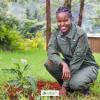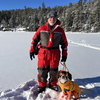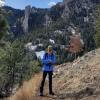Oportunidad de financiamiento para mujeres en conservación
30 May 2025 3:15pm
Population genetics with eDNA
30 May 2025 1:46pm
Computational Entomology Webinar IV: Platform design for standardized pollinator attraction to camera traps
30 May 2025 1:41pm
Director, Communications and Marketing
29 May 2025 6:15pm
Conservation Technology Business Development Associate
29 May 2025 6:13pm
Program Officer / Development Associate
29 May 2025 6:13pm
Conservation X Labs Talent Pool
29 May 2025 6:12pm
Researcher and Manager of Ecology and Nature Tech Solutions
29 May 2025 6:10pm
Growing with Nature
29 May 2025 10:14am
Applications Open: Become a 2025-2026 WILDLABS Group Leader
 WILDLABS Team
and 1 more
WILDLABS Team
and 1 more
28 May 2025 3:10pm
WILDLABS AWARDS 2025 - Open-Access AI for Marine Mammal Acoustic Detection
27 May 2025 7:53pm
World Wildlife Fund Wildlife Cafe:
27 May 2025 11:31am
Application deadline for Animove, 31May2025
27 May 2025 10:24am
Dual-/Multi-Use Technology Strategies
1 April 2025 11:46pm
15 April 2025 7:36pm
This is more than the supply chain though. The point was the company itself cannot use any tech for anything from the 5x companies. So in my case my ISP is incompatible. Essentially I see the only companies making that kind of sacrifice are ones that want to devote themselves to defence only.
Of course. That’s US defense as a customer. European defence is fully on the table.
It’s just sad that it’s not restricted to defence. US government wildlife organisations cannot buy European tech unless that European company was pure in their eyes.
15 April 2025 8:37pm
True, the US ecosystem is a challenging space right now, for basically all sectors.
We should not let the US chaos prevent us from engaging with opportunities in other nations' multi-use markets. A company's ability and journey to tap into other markets is very unique to them (product, team, finances, infrastructure, agility), and some simply cannot adapt. There is no one size fits all (or even most) solution when it comes to multi-use strategies. It is important that we are systematic about evaluating the cost to adapt our product-service to a different market, and the value of new opportunities in that new market, without losing track of underlying conservation and social good needs.
Involve our young learners in climate change action.
27 March 2024 3:24pm
31 July 2024 7:38pm
Thank you @loveness
2 August 2024 12:53pm
This is a great paper, Cathy!
3 August 2024 3:17pm
very nice paper Cathy!!!
Detection dogs sniff out South Australia's elusive Murray-Darling carpet python
26 May 2025 9:36pm
IR drone image processing: Pix4d vs Agisoft Metashape for Autel Drone
9 April 2025 6:06pm
26 May 2025 5:08pm
Not the same equipment, but at work I have used Metashape with DJI drones with an IR sensor (Mavic 3 Thermal, Matrice 3DT, Matrice 4T, etc) and the workflow to create IR maps relies on metashape fromt TIFFs created using the DJI thermal SDK. There are a lot of considerations that will affect the final quality of the output:
- Flight speed should be low to avoid motion blur, the IR sensors are quite sensitive to that.
- high overlap is required for more homogenous ground features
- the processing settings in metashape play a key role - to avoid the "fishbowl" effect etc.
- Flight altitudes need to be consistent to avoid calibration issues.
I think it is worth giving it a shot in Metashape. From my experience, metashape tends to error out much less frequently. I reckon the forest scene might be the biggest challenge for you - given the low number of tie points etc. What are your flight settings ?
Field-Ready Bioacoustics System in Field Testing
2 April 2025 10:38am
3 April 2025 3:38pm
Hi Carly,
Thanks so much for your thoughtful message—and for introducing me to Freaklabs! BoomBox looks awesome, and it’s exciting to see how closely our goals align. There’s definitely potential for collaboration, and I’d be happy to chat more. Their system is super efficient and I think both of our systems have a place in this space.
Affordability and reliability were key considerations when I started building Orpheus. I wanted to create something rugged enough to survive in the field year-round while still being accessible for conservationists with limited budgets. The full-featured unit is €1500, and the basic model is €800. That pricing reflects both the hardware and the considerable time I’ve spent writing and refining the system—it’s all about balancing performance, durability, and keeping it sustainable for the long term.
Even the base unit is more than just a playback device. It logs every playback event, duration, and species, with enough onboard storage for two years of data, and it automatically converts the logs to line protocol for easy integration into platforms like InfluxDB.
On top of that, Orpheus actively logs and graphs temperature, humidity, atmospheric pressure, and battery voltage. During deep sleep, it interpolates the environmental data to preserve meaningful trends without wasting energy. You can view any of these on it's 5" touch screen or view it in the cross-platform app that will support both Android and IOS once I'm done programming it.
As for audio specs:
- Recording is supported up to 96kHz,
- Playback is full 24-bit, both MP3 and WAV formats
- The system currently supports recording audio clips, reviewing them, and even adding those clips directly to playlists on the device.
That said, for bat research, I know ultrasonic capability is essential. While the current hardware doesn’t capture over 100kHz, I’ve already done the research and identified alternative audio interfaces that would support that range. If that’s a need researchers are interested in, I’d be open to building out a dedicated version to meet those requirements.
Power-wise, it runs indefinitely on solar, even under partly cloudy conditions. It uses a LiFePO₄ battery, and depending on usage, it can operate for up to two weeks on battery alone. It also supports external power from 12V or 24V systems, and solar input from 12V to 70V, so it’s pretty adaptable to various field setups. it also can operate from -5 to 70C (still testing that), but the hardware should be capable according to specs. Your correct though in places like the rain forest that could be challenging and an alternative would need to be considered.
The software is written modularly to allow for expansion based on user needs. For instance, I’ve already integrated support for a rain sensor that can pause playback if the user chooses that, and could easily include PIR, microwave, or other sensors for more specialized triggers.
Regarding durability, I’m currently testing mesh cable sheathing to deter rodents and other wildlife from chewing the wires—this was a concern raised by one of the teams using Orpheus, and I’m designing around it.
Also, Orpheus includes a seasonal scheduling engine—you can define your own seasons (like Migration, Breeding, etc.) and assign unique playback playlists to each. The device uses astronomical data (sunrise/sunset) based on your provided lat/lon and time zone, and automatically adjusts timing offsets like “1 hour before sunrise.” The goal is truly fire-and-forget deployment.
I'm open to adding any features or sensors that might be useful within reason.
I’m curious though, what specs would make a recording device for bats an indispensable tool? What features don’t already exist on the market that should?
Warm regards,
Travis
5 April 2025 4:03pm
I love the look of the system! We almost called our new sensor Orpheus, but decided against it as there is already a microphone named that! I'd love to see a bit more about the technical implementation! Is this running off of a CM5 or something different?
6 April 2025 1:45pm
Hi Ryan, hmm, I had no idea there was a microphone named that. I thought about how it’s used to lure birds for netting, and I like Greek Mythology. I thought it was a perfect fit, but hmm, May have to change the name. I considered using a CM, but i wanted the system to be as efficient as possible. I am using a RPI Zero 2 W with emmc. To ensure the UI stays responsive I used some backend tricks like thread pooling. It works well and resources stay in check. The challenging part is ensuring thread handling is done gracefully and carefully to prevent race conditions. What sort of sensor have you been developing?
IoT & insect smart traps that collaborate?
26 May 2025 5:24am
WILDLABS AWARDS 2025 - Ambiance: Leveraging Fear to Mitigate Human-Wildlife Conflict
25 May 2025 10:38pm
Enhancing automated analysis of marine soundscapes using eco-acoustic indices and machine learning
31 May 2022 6:33pm
Agent Based Modelling Advice
5 May 2025 3:23pm
19 May 2025 5:05pm
Thanks for the reply Alan.
The research question is:
If I modify the infrastructure (roads, wildlife crossings, fences, water features etc basically any geospatial feature) in the environment can we predict where the deer/elk will move to based on those modifications?
The goal is to prototype the new layout/features of an area that contains a large road to establish the best measures (wildlife crossings, fences) and placement to prevent elks crossing the large road as much as possible. The team want to minimize vehicle collisions.
The second order effects are also interesting. If we close off an area they are used to going, does that change where they go, and if so, where?
22 May 2025 2:31pm
Hi David,
I would reiterate what Alan has said here - there is no concrete "right" or "wrong" way! It can be really helpful if you have animal movement data, particularly if it's from the area you'd like the model to emulate, but not a requirement.
Based on the question you're asking, you could analyze the deer data you have to determine how different variables influence their movement, which you could then use to set some of the rules for your model. I would note that deer and elk can move across a landscape quite differently, so if you have a species mismatch this might not be the best approach. I have taken this approach for some models, but I have also built others where the rules were entirely based on information pulled from an in-depth literature review. All of my models deal with large mammals (deer, elk, cattle, wolves, etc.).
One of the biggest things you'll have to decide is which/how many rules and parameters you want to include in the model, because you can end up with a long list rather quickly, making the model complex and heavy. How you set up your rules and parameters will also depend on the scale, of your model, of course. Behaviors and movement decisions appear differently at an hourly, daily, weekly scale across meters, kilometers, etc. so you'll want to account for that.
Good luck!
Vivian
22 May 2025 8:59pm
Hi Vivian,
Thank you so much for your reply! I appreciate the pointers on species mixing, to clarify: I have been experimenting with deer data, but for once the project is underway I will be given access to lots of elk data, which I would then use for the elk simulation. The elk data will be from the location of interest.
A few questions if you have time...
- When you say 'model', do you mean an AI model, or do you mean a more general take: a set of programmatic rules you have encoded to control the agent?
- Similar to above, when you say 'analyze the data', are you manually extrapolating rules from looking at charts you make of the data, or are you selecting data parameters for funnelling into a machine learning model?
- When you say account for different time/distance scales, are you suggesting that looking at immediate next move is not sufficient and I need a second "layer" for agent decision-making which might be about seasonal drivers, or at least next move is date/season aware?
- In the models you have made are you ever encoding rules as "forces"?.. some things attract the animal to move to it, other things repel the animal to move away from it and the animal moves based on all the "forces" combined?
I have more questions, like whether you include feeding or memory in the agent, if you primarily examine land type it is on and can move to, topography... but the 4 listed questions will give me a great starting point.
If you have any good examples/literature for elk/deer on movement models I would love to take a look.
Thank you so much!
David
🦛 MIT Moo Deng AI Challenge Human-Nature Interaction 🦛
22 May 2025 8:25pm
Mothbox wins 2025 WILDLABS Award!
22 May 2025 7:55pm
PhD Advice
22 April 2025 1:34am
4 May 2025 4:14pm
Hi @ethanmarburger, I am probably not the best to give advice here given that it took me nearly two decades to actually finish my PhD, but I'd aim for something that you are really interested in so that you can keep up a high momentum. If you love your project you are more likely to cruise through the 'grind' periods. In terms of networking, WILDLABS is definitely a great place to start! You may well find some connections just looking across the threads here, and reaching out to people that are doing work you are interested in. More broadly, and depending on where you are in the world, you might be able to volunteer or even get some work on projects in your area, which can be a good way to get a foot in the door to larger research projects. You could possibly look at helping out on some analysis of spatial/AI datasets etc, or reach out to not-for-profits and conservation charities and see what they need/you might be able to help with - but try and be as specific as possible so they know straight away what you are after. Just a few quick ideas off the top of my head, and more than happy to discuss further. My best for your search!
Cheers,
Rob
19 May 2025 12:29am
Hi Ethan, It's indeed a competitive area. My advice for you (and anybody else seeking a PhD supervisor)...
- Do background research on each individual potential supervisor and always approach them demonstrating your alignment with their research focus.
- Show that you have read and understood one or two of their key (relevant) papers in your initial email to them.
- Have in mind something relevant to you AND to the potential supervisor, to propose as a topic in your initial email to them. But, remain open to their ideas - there's a good chance they have something that would align with your interests and that would (more) smoothly generate a successful PhD than you might have come up with ;-)
- Write clearly and succinctly.
- Demonstrate enthusiasm and highlight any relevant past experience and engagement in the relevant area (briefly).
- Attach a PDF CV.
- Apply for PhD positions in areas where you are qualified.
- Evidence that you have published a good paper, especially as first author, from your Masters thesis would be a bonus.
This is a time-consuming process. But you may end up spending 3+ years working with this supervisor, and vice versa. It's important for all concerned that you (and they) make a good, informed decision.
Good luck in your search!
Alan.
Second generation Automated moth monitoring system
22 May 2025 2:34am
AniMove Summer School 2025Application deadline: 31.May 2025
21 May 2025 1:08pm
27 May 2025 10:20am
Announcing the WILDLABS Awards 2025 Grantees
20 May 2025 2:32pm
22 May 2025 10:00am
26 May 2025 5:25pm
1 August 2025 10:46am


























15 April 2025 6:17pm
That is a great point and the current international trade climate has been making supply chain even more difficult. This also deeply affects US companies given much of the US goods manufacturing and assembly happening in China. Over the last few years, I have been seeing US hardware companies (e.g. drone platform and component OEMs) sourcing their goods from India, Turkey, Canada, and more recently in African and South American nations. Because of the last 3-to-5 years of increasingly restrictive and costly international hardware trade, there has been a emergence of specialized component manufacturers internationally. For European companies interested in providing hardware services to the US, I would suggest diversifying the supply chain beyond China. Given the current climate and trends, that added supply chain resilience may be a good idea, regardless of work with the US.